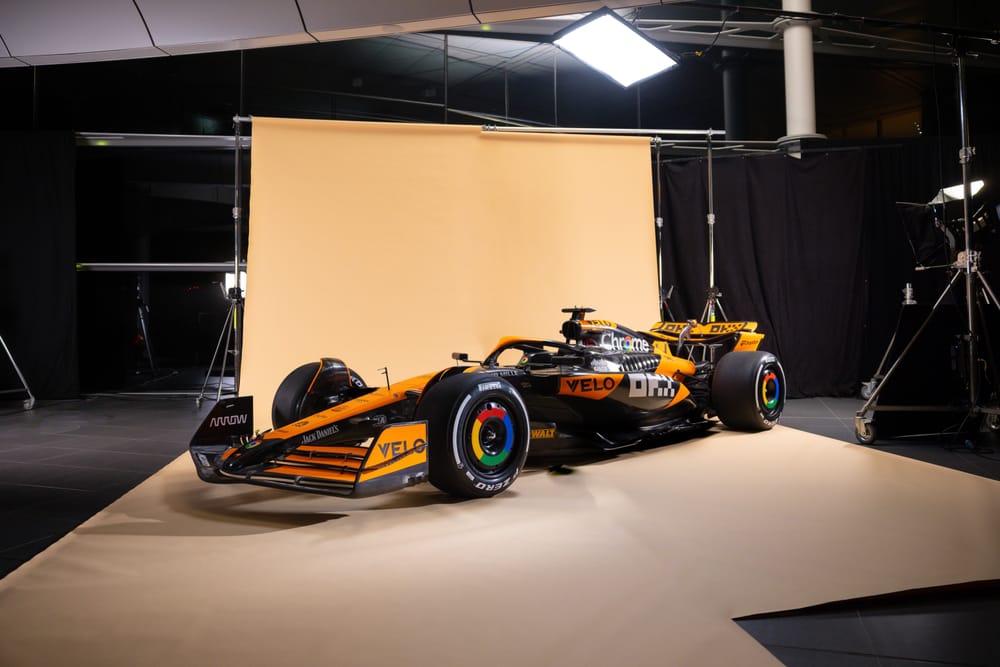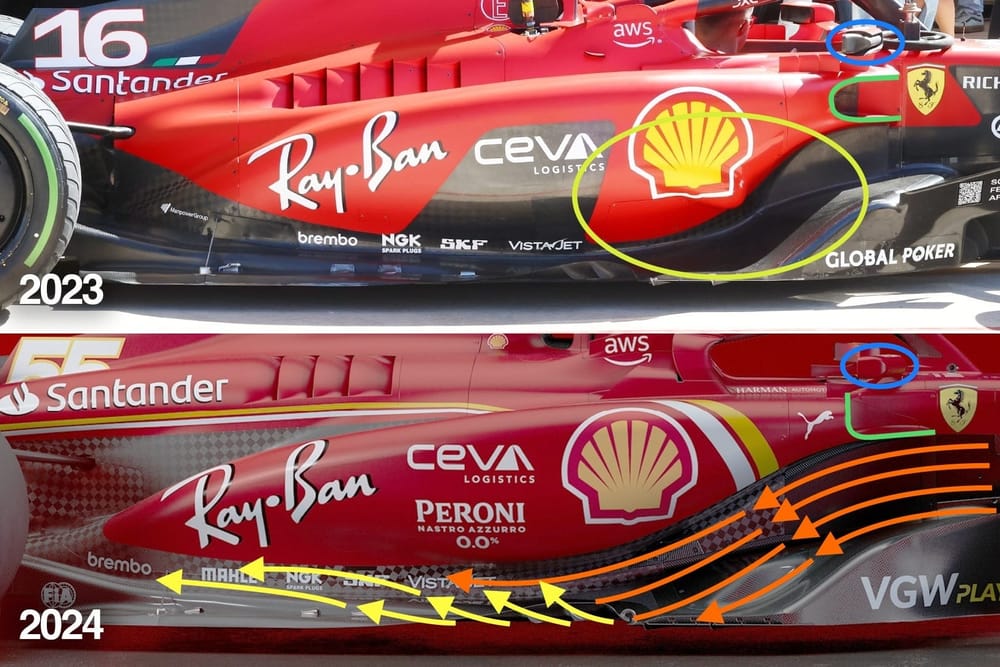Up Next

For McLaren, the 2024 Formula 1 season is about keeping the momentum from 2023 - when it properly joined the battle to be best of the rest behind Red Bull.
It’s never easy to keep the ball rolling continuously in the same direction, but during that period of development in 2023 McLaren will have discovered what areas on the car were limiting that continual development direction - so the winter will have all been about finding more room for development in those areas, not necessarily finding all of that development in one go.
Fresh input from a strengthened technical staff will also influence the team’s development direction to some degree, but growing can also be painful so it’s vital to make sure you keep doing what you do well until those new people get their feet under the table.
McLaren basically needs to avoid losing sight of the path it followed so effectively in 2023, and find ways to keep that journey progressing.
So let’s have a look at McLaren’s winter work.
Front wing
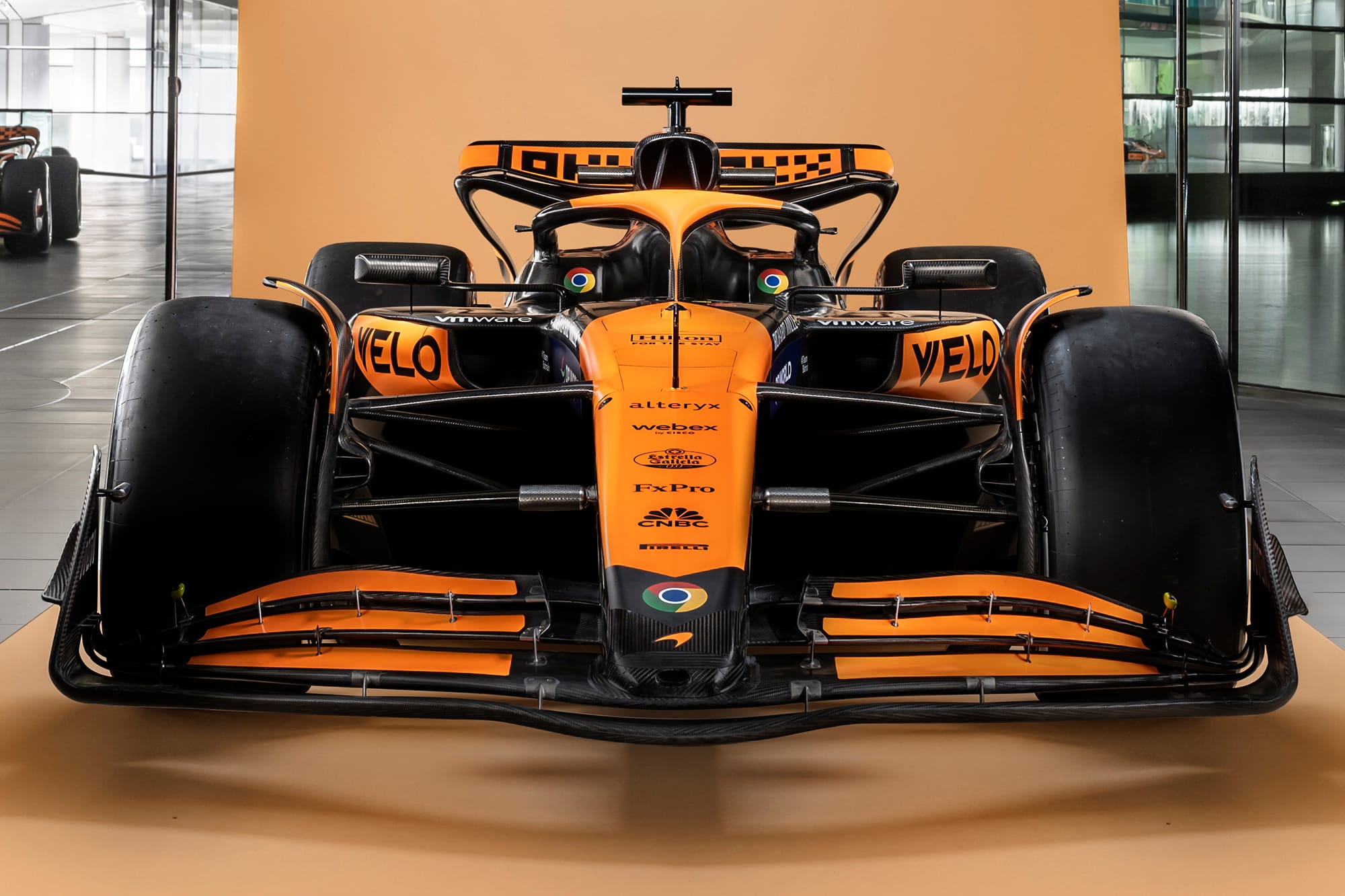
As we can see from this front shot, the front wing and nose assembly is almost identical to last year’s version. In fact, it could actually be the same component.
It is a bolt-on unit, so it is an area which you might leave to develop once you see what the others have come up with.
The problem with that is it can affect the airflow structure around the rest of the car, so sometimes you can miss bigger opportunities by focusing on the airflow structure that exists as opposed to what you might just be able to create.

The front brake ducts have a slightly different inlet profile (red highlight inside green ellipse above). Again, these are changeable components to suit each circuit's braking demands - so once again this might just be a different brake cooling level.
Two years ago McLaren ran into major front brake cooling problems in Bahrain, so it won’t be taking any risks in this department.

I often say it doesn’t matter how good your aerodynamic map profile is - if it’s not controlled then it is all wasted. McLaren has focused on that control with its front suspension geometry.
We can see the top front wishbone forward leg (green highlight above) is very similarly placed to the 2023 version. However, the rear leg (yellow highlight) has a much lower inboard pickup than the 2023 version.
The pullrod (blue highlight) and lower wishbone (magenta highlight) are again similarly placed to 2023.
We can’t really see it in the picture (as McLaren has gone to some lengths to disguise details on the images), but I’m pretty sure the front trackrod is in line with the lower wishbone - as is the case on most other cars.
The light blue arrow points out the forward-facing camera pod. Its position is defined in the regulations, same for everyone, as is the weight of it.
Sidepod inlet
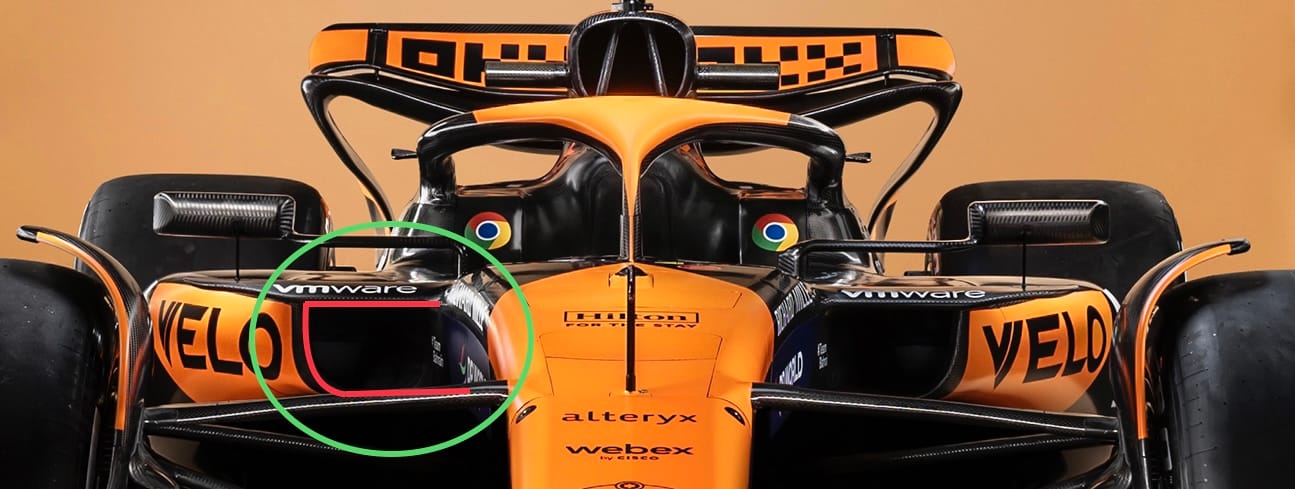
One area that is a little surprising to me is the change in the radiator inlet duct.
McLaren has gone off at a tangent to all the other cars we’ve seen so far this year by switching from a Red Bull ‘duckbill’-style inlet - also a McLaren development in 2023 - to a more forward-facing inlet (red highlight in green ellipse above).
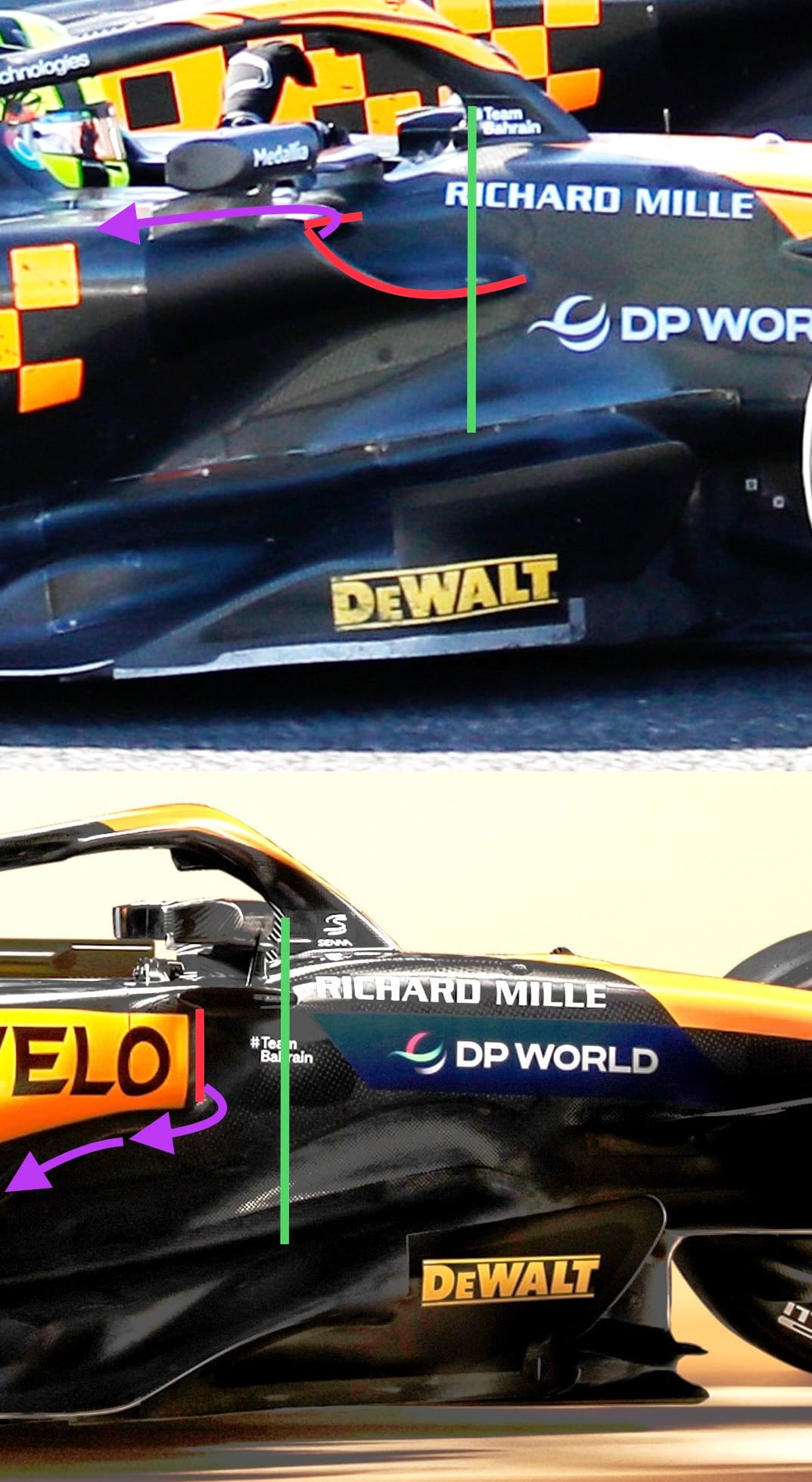
We can see the difference in this comparison shot (red highlight).
In McLaren’s defence, if we take the rear of the halo central mounting (vertical green line), we can see that the complete inlet looks like it has been moved rearward slightly.
That said, with this flat style of inlet instead of the radiator spillage at high speed going over the sidepod upper surface, it will now have a choice of where to go (magenta arrows) and depending on the pressures around that inlet, which at high speed will be lower in that undercut area, it could affect the flow structure that the undercut flow has on the floor edge detail.
Floor edge
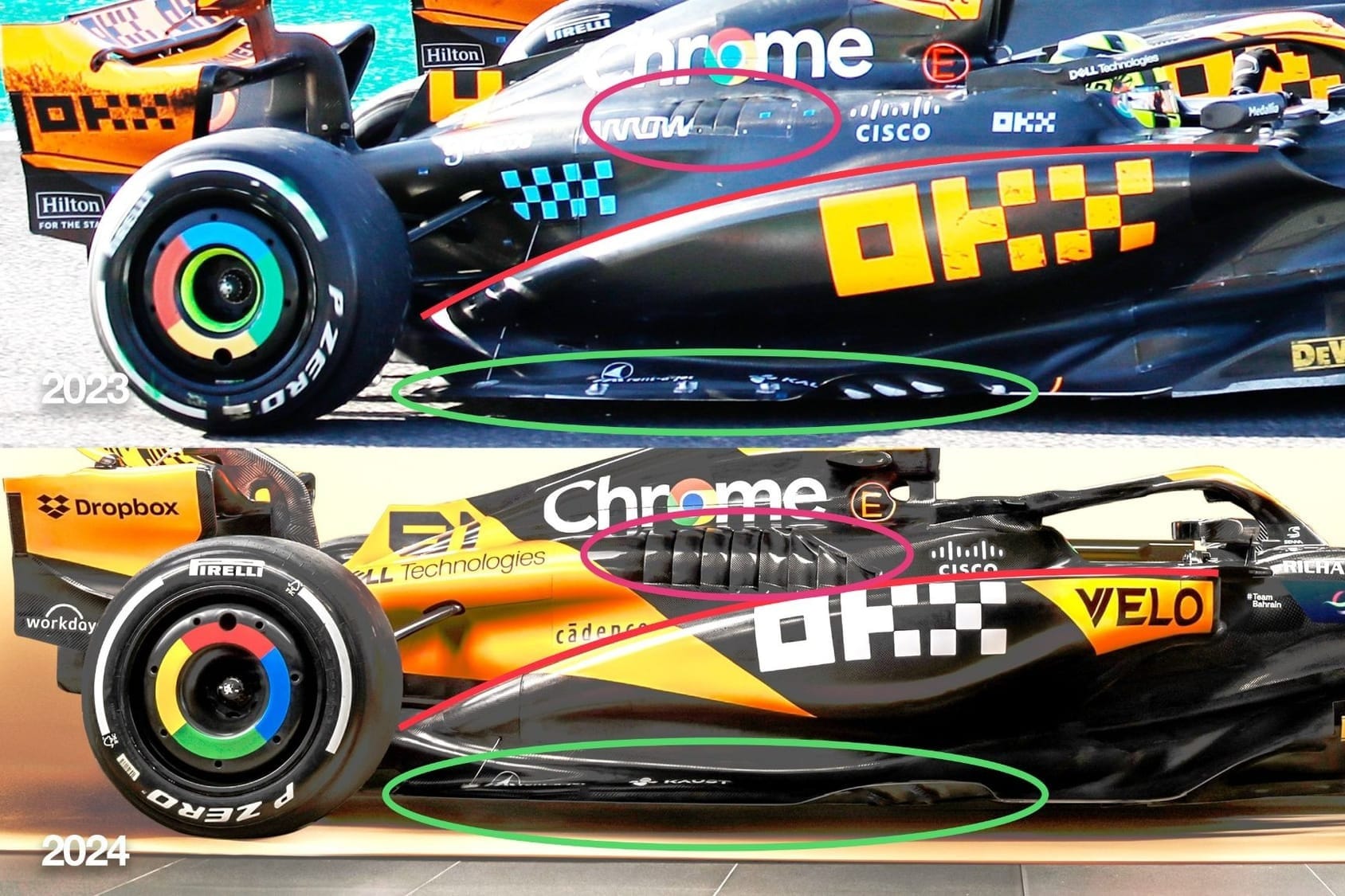
There are just small changes to the floor edge detail. We often say it’s what happens underneath that really does generate the performance, and rightly so, but this area is critical to the consistency of the underbody flow.
The side view body profile is again very similar to last season (red highlight above). We can see a longer louver panel starting further forward with more louvers in it (red ellipse). Again, this will be altered to suit individual circuit requirements.
Rear suspension
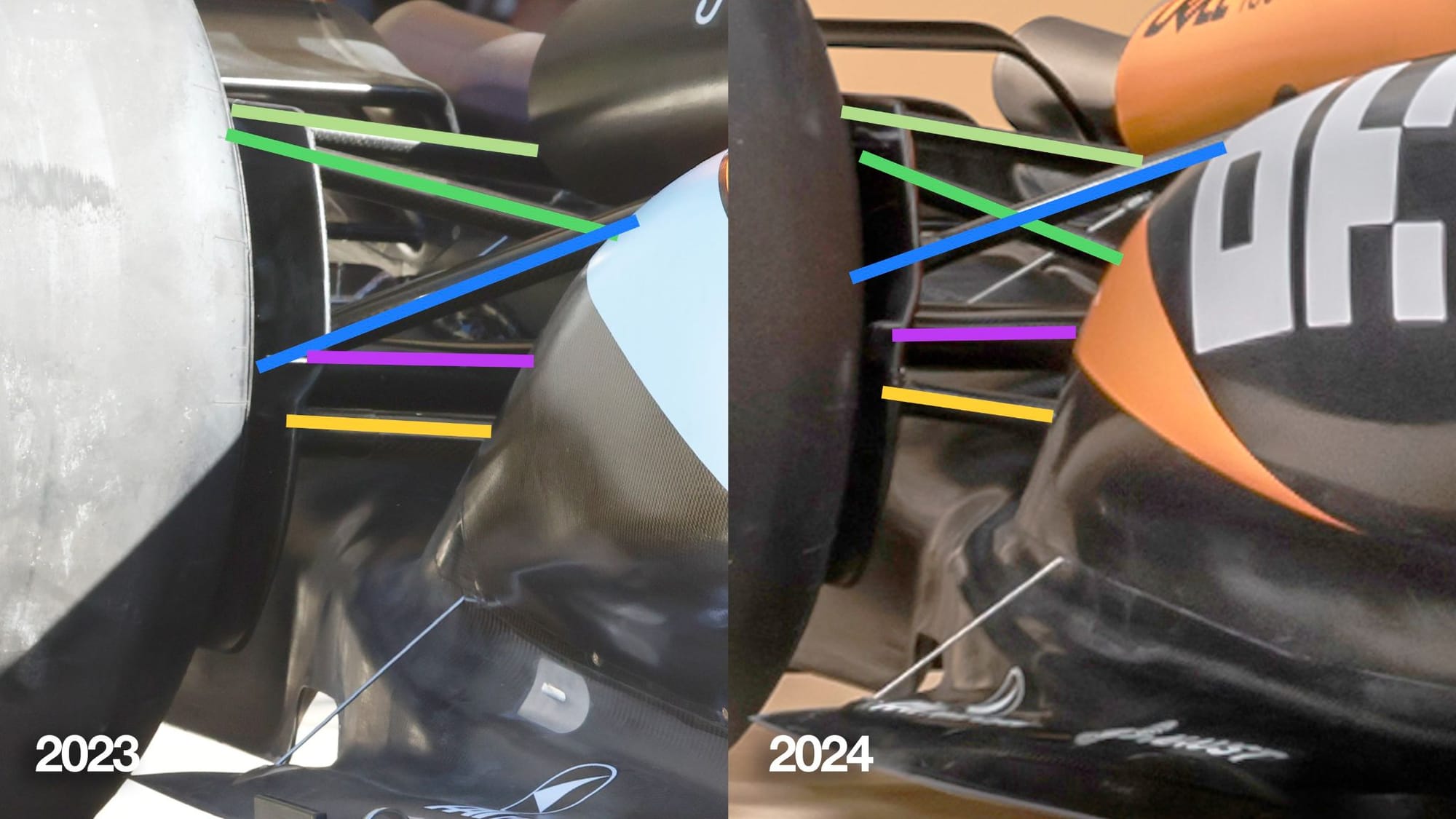
Rear suspension-wise, the layout is similar to last year.
McLaren has retained the pushrod system (blue highlight).
It has a similarly positioned top rear wishbone rearward leg (light green highlight) but a lower top wishbone inboard forward leg mount (dark green highlight) will generate more anti-lift from the rear suspension geometry, controlling the car's attitude better under braking.
The driveshaft and its shroud-cum-lower wishbone rear leg (magenta highlight) and the lower wishbone forward leg (yellow highlight) are mounted in similar positions to 2023 but at slightly different angles.
Conclusion
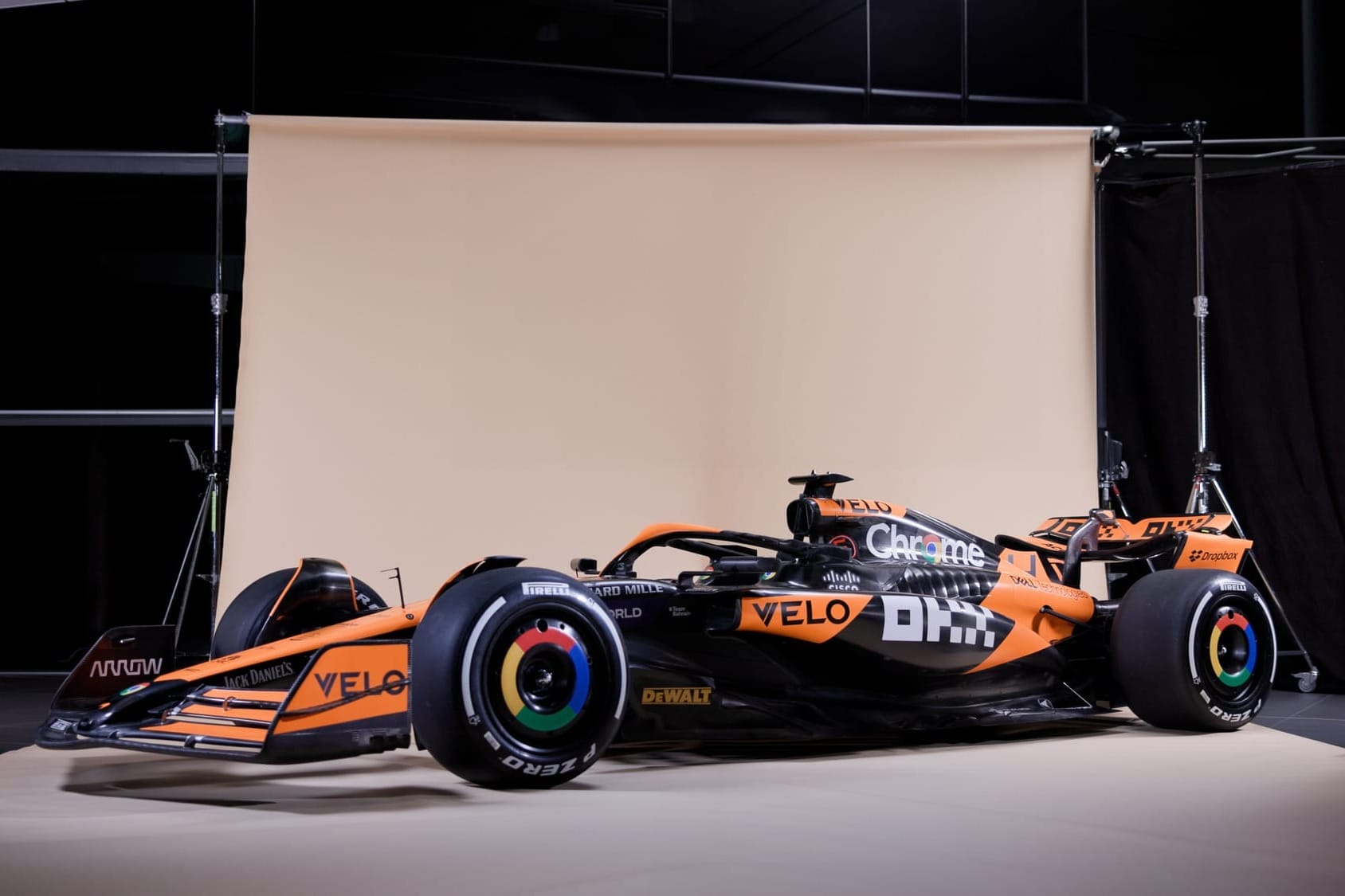
No real pictures of the rear of the car for me to get my teeth into, but from what I can see aerodynamically, other than the radiator inlet change which I would question, it is all fairly similar to what McLaren finished with last season.
McLaren has devoted the off-season into controlling the aero platform with an improved suspension system - more anti-dive on the front and more anti-lift on the rear.
To have put all its eggs in that one basket must mean McLaren is happy with where it is aerodynamically, and if that platform can be controlled better the team must feel confident there is more performance to come.
McLaren will obviously focus on the aerodynamics with development updates as the team learns more about how the car responds on track to these changes, but that means starting the season on a steep learning and development curve and catching up as the season unfolds.
That’s what happened last year, too. I’m not saying this season will be the same, but you can’t afford to throw away those early points when other teams might just suffer some reliability problems.


